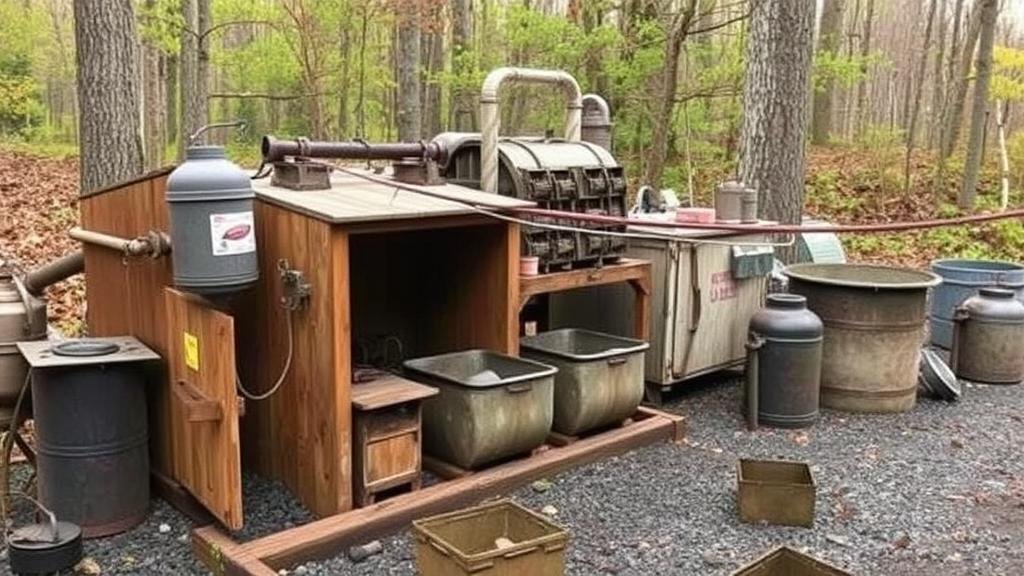Exploring Forgotten Fish Hatchery Sites for Early Conservation Equipment
Exploring Forgotten Fish Hatchery Sites for Early Conservation Equipment
The decline of fisheries and the biodiversity crisis have prompted a renewed interest in traditional conservation methods, specifically those utilized in historical fish hatcheries. This article explores the significance of rediscovering and studying forgotten fish hatchery sites in the United States, particularly their contributions to contemporary conservation practices and the equipment developed during their operational phases.
Historical Context of Fish Hatcheries
Fish hatcheries were established in the late 19th and early 20th centuries in response to declining fish populations caused by overfishing, habitat destruction, and pollution. The first state fish hatchery was founded in 1871 in Pennsylvania, which marked the beginning of structured efforts to replenish fish stocks.
Over time, various hatchery techniques emerged, driven by scientific advancements and practical needs. Notable historical examples include:
- The establishment of the U.S. Fish Commission in 1871, which oversaw hatchery operations aimed at restoring depleted fish stocks.
- The introduction of the first artificial spawning techniques in the 1880s, which significantly increased the survival rates of fish populations.
Turning Points in Fish Conservation Technology
A variety of equipment and methodologies were developed in early hatchery sites that played crucial roles in fish conservation efforts. Equipment such as incubators, fry rearing tanks, and automated feeding systems laid the groundwork for modern hatchery practices. One pivotal development was the engineering of the flow-through system for egg incubation, first implemented in the 1930s.
Today, these equipment designs are not only historically significant but also provide insights into sustainable practices. For example, a study by the Technical Committee on Fish Culture demonstrated that the flow-through incubation system approximated natural conditions more closely than previous static systems, enhancing hatch rates by nearly 20% (Technical Committee on Fish Culture, 2019).
Uncovering Abandoned Hatchery Sites
As effective aquatic conservation tools, abandoned hatchery sites offer a wealth of information. Sites such as the historic Wallowa Lake Fish Hatchery in Oregon, operational from 1920 until its closure in the early 2000s, provide a backdrop for studying the techniques and tools once in use. Documented conservation successes at these sites, including the recovery of the native westslope cutthroat trout, underscore the potential for valuable insights.
Research has shown that many of these forgotten locations harbor not only remnants of machinery but also historical data that could guide contemporary conservation practices. For example, the implementation of the hatchery-wild fish management paradigm developed in the Pacific Northwest has roots in the practices observed at these earlier hatcheries, which utilized wild fish stocks for breeding programs.
Challenges in Documenting Historical Practices
Despite their significance, many fish hatchery sites are neglected and poorly documented. Challenges abound in accessing historical records, partly due to transitioning management from state to federal agencies. This institutional shift can create gaps in knowledge regarding the operational techniques employed. Plus, climate change impacts have led to site deterioration, complicating archaeological efforts to retrieve equipment and information.
Methodologies for Investigating Hatchery Sites
To effectively document and analyze early conservation equipment at hatchery sites, researchers employ a combination of field surveys, historical research, and archaeological methods. This multidisciplinary approach enables a comprehensive understanding of the technological landscape of early fish hatcheries.
- Field Surveys: Systematic examinations of abandoned sites allow researchers to identify physical remnants of hatchery facilities.
- Historical Document Analysis: Investigating archival materials provides insight into methodologies, technologies, and outcomes of hatchery practices.
- Archaeological Excavations: Carefully excavating sites can reveal tools, equipment, and environmental data that inform about past practices.
Conclusion and Future Directions
Exploring forgotten fish hatchery sites is crucial for understanding the evolution of fish conservation technologies and methodologies. By investigating these historical remnants, researchers can uncover essential techniques that could be adapted for current and future conservation efforts.
Actionable takeaways include:
- Encouraging collaboration between historians, archaeologists, and conservationists to document and analyze these sites.
- Advocating for the preservation of important hatchery locations as part of aquatic conservation and historical integrity.
- Utilizing findings from these explorations to inform best practices in modern fish hatcheries.
In summary, the exploration of forgotten fish hatchery sites not only sheds light on past conservation efforts but also offers valuable lessons for the ongoing challenges regarding fish population sustainability and biodiversity conservation.


